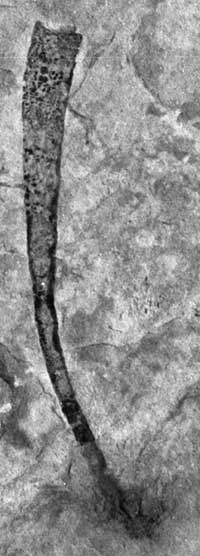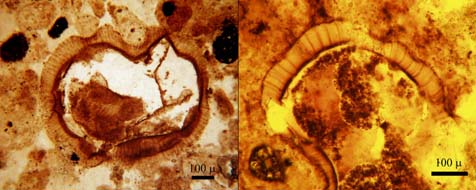| Tools: Save | Print | E-mail | Most Read |
| China: Fossil Finds Link Embryos to Adults |
| Adjust font size: |
A recent fossil discovery in South China, combined with fossils found in 1998 and 2000 could reveal how the earliest known egg-laying organism developed from embryo to adulthood.
The case for a relationship between the two fossil types grew stronger following the recent discovery of about 80 intermediate-stage fossils that have traits in common with both groups. The finding, to be detailed in the February issue of the journal Geology, could provide the missing link between egg and adult versions of one of Earth's earliest animals. "The new fossils provide some suggestive evidence that these two groups of fossils are linked developmentally," said study team member Shuhai Xiao of Virginia Tech. On the outside, the early and intermediate stage embryos look very similar. They are about the same size -- about 0.02 inches wide or about as big as a grain of sand -- and both have similar outer coverings, or embryonic envelopes. It's what's inside the egg that is different. Using an imaging technique called microfocus X-ray computed tomography (microCT), the researchers virtually peeled away the envelope to reveal the new fossils' innards. What the researchers found were three-dimensional spiral structures that look like grooves on a screw. The only signs of these coils on the outside of the embryos are tiny holes arranged in a pattern resembling stitches on a baseball. Traces of these coils are also found on the external coverings of the adult fossils. Some of the intermediate embryos also appeared to be unfurling, encouraging the speculation that if the process had continued, the embryos would distend like a stretched slinky or a flattened fuselli noodle into the tubular adult form. The new embryos could help shed light on how ancient animals developed and whether the process was similar to that of living organisms. Ancient embryos and embryos from modern day animals are remarkably similar, but the developmental journey from egg to adult for ancient organisms is still cloaked in mystery. "Now we have isolated dots. We need to connect them and make a complete story before we can say anything about their evolutionary relationship," Xiao told LiveScience. The researchers are hopeful that they can find later stages of embryo development for M. ornata. "I think this is an encouraging sign that later embryonic stages may still be preserved in this rock," Xiao said. "If we keep looking, we may even find a developmental sequence."
(Agencies via Xinhua News Agency January 24, 2007) |
| Tools: Save | Print | E-mail | Most Read |
 |
| Related Stories |


